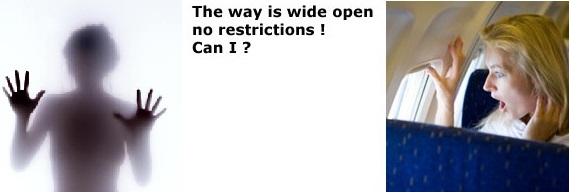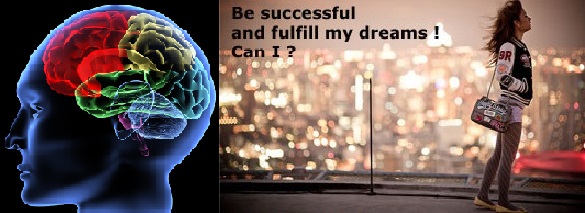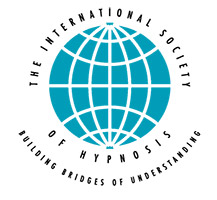
Pathological Mood Fluctuation
Bipolar disorder or bipolar affective disorder, historically known as manic–depressive disorder, is a term from psychiatry. It is a kind of mental illness.
It is a psychiatric diagnosis that describes a category of mood disorders defined by the presence of one or more episodes of abnormally elevated energy levels, cognition, and mood with or without one or more depressive episodes. The elevated moods are clinically referred to as mania or, if milder, hypomania.
Individuals who experience manic episodes also commonly experience depressive episodes, or symptoms, or a mixed state in which features of both mania and depression are present at the same time. These events are usually separated by periods of "normal" mood; but, in some individuals, depression and mania may rapidly alternate, which is known as rapid cycling. Severe manic episodes can sometimes lead to such psychotic symptoms as delusions and hallucinations. The disorder has been subdivided into bipolar I, bipolar II, cyclothymia, and other types, based on the nature and severity of mood episodes experienced; the range is often described as the bipolar spectrum.
Estimates of the lifetime prevalence of bipolar disorder vary, with studies typically giving values of the order of 1%, with higher figures given in studies with looser definitions of the condition. The onset of full symptoms generally occurs in late adolescence or young adulthood.
Diagnosis is based on the person's self-reported experiences, as well as observed behavior. Episodes of abnormality are associated with distress and disruption and an elevated risk of suicide, especially during depressive episodes. In some cases, it can be a devastating long-lasting disorder. In others, it has also been associated with creativity, goal striving, and positive achievements.
There is significant evidence to suggest that many people with creative talents have also suffered from some form of bipolar disorder. It is often suggested that creativity and bipolar disorder are linked.
Genetic factors contribute substantially to the likelihood of developing bipolar disorder, and environmental factors are also implicated. Bipolar disorder is often treated with mood stabilizing medications and, sometimes, other psychiatric drugs. Psychotherapy also has a role, often when there has been some recovery of the subject's stability. In serious cases, in which there is a risk of harm to oneself or others, involuntary commitment may be used. These cases generally involve severe manic episodes with dangerous behavior or depressive episodes with suicidal ideation.
There are widespread problems with social stigma, stereotypes, and prejudice against individuals with a diagnosis of bipolar disorder. People with bipolar disorder exhibiting psychotic symptoms can sometimes be misdiagnosed as having schizophrenia, a serious mental illness.
Signs and symptoms
Bipolar disorder is a condition in which people experience abnormally elevated (manic or hypomanic) and, in many cases, abnormally depressed states for periods of time in a way that interferes with functioning. Not everyone's symptoms are the same, and there is no simple physiological test to confirm the disorder. Bipolar disorder can appear to be unipolar depression. Diagnosing bipolar disorder is often difficult, even for mental health professionals.
What distinguishes bipolar disorder from unipolar depression is that the affected person experiences states of mania and depression. Often bipolar is inconsistent among patients because some people feel depressed more often than not and experience little mania whereas others experience predominantly manic symptoms. Additionally, the younger the age of onset—bipolar disorder starts in childhood or early adulthood in most patients—the more likely the first few episodes are to be depression. Because a bipolar diagnosis requires a manic or hypomanic episode, many patients are initially diagnosed and treated as having major depression.
Symptoms
Sometimes, a person can experience something called mania. Mania is when a person's brain goes into a high-energy state. The other extreme is a low-energy state that is depression. "Bipolar" literally means "two poles" or two extremes in how much energy the brain has. When in a high-energy state, mania can cause extreme emotions such as panic attacks or extreme happiness such as euphoria.
When a person with Bipolar Disorder is manic, they might not think as hard about the choices that they make, and sometimes may do things like give things to people, or spend lots of money. This is because during a manic episode, a lot of people start to believe things that are not really true, or get confused about what's real and what's made up. People can also become aggressive and possibly violent while manic, but this only happens in very, very bad cases, so it's not as common as some people think.
Mania
There are a few things that a lot of people start to believe when they have manic episodes. Sometimes, they might think they have lots and lots of money, when they really do not. Other times, the person who has a manic episode might think that people they knew are alive, even though the truth is that these people have died. Every person is different, so it's important to remember that these things do not happen to all people with Bipolar Disorder.
Manic Depression
Bipolar Disorder used to be called Manic Depression. This was because the two symptoms were mania and depression. Now psychiatrists and psychotherapists (doctors who specialize in mental illnesses) think bipolar disorder is one illness in its own right, not a combination of two other illnesses, and have developed new treatments and "coping strategies" (plans to live more easily with bipolar disorder)
Manic episode
Mania is the signature characteristic of bipolar disorder and, depending on its severity, is how the disorder is classified. Mania is generally characterized by a distinct period of an elevated mood, which can take the form of euphoria. People commonly experience an increase in energy and a decreased need for sleep, with many often getting as little as 3 or 4 hours of sleep per night, while others can go days without sleeping. A person may exhibit pressured speech, with thoughts experienced as racing. Attention span is low, and a person in a manic state may be easily distracted.
Judgment may become impaired, and sufferers may go on spending sprees or engage in behavior that is quite abnormal for them. They may indulge in substance abuse, particularly alcohol or other depressants, cocaine or other stimulants, or sleeping pills.
Their behavior may become aggressive, intolerant, or intrusive. People may feel out of control or unstoppable, or as if they have been "chosen" and are "on a special mission" or have other grandiose or delusional ideas. Sexual drive may increase. At more extreme phases of bipolar I, a person in a manic state can begin to experience psychosis, or a break with reality, where thinking is affected along with mood. Some people in a manic state experience severe anxiety and are very irritable (to the point of rage), while others are euphoric and grandiose.
To be diagnosed with mania according to the Diagnostic and Statistical Manual of Mental Disorders (DSM), a person must experience this state of elevated or irritable mood, as well as other symptoms, for at least one week, less if hospitalization is required.
Severity of manic symptoms can be measured by rating scales such as self-reported Altman Self-Rating Mania Scale and clinician-based Young Mania Rating Scale.
Depressive episode
Signs and symptoms of the depressive phase of bipolar disorder include persistent feelings of sadness, anxiety, guilt, anger, isolation, or hopelessness; disturbances in sleep and appetite; fatigue and loss of interest in usually enjoyable activities; problems concentrating; loneliness, self-loathing, apathy or indifference; depersonalization; loss of interest in sexual activity; shyness or social anxiety; irritability, chronic pain (with or without a known cause); lack of motivation; and morbid suicidal ideation. In severe cases, the individual may become psychotic, a condition also known as severe bipolar depression with psychotic features. These symptoms include delusions or, less commonly, hallucinations, usually unpleasant. A major depressive episode persists for at least two weeks, and may continue for over six months if left untreated.
Hypomanic episode
Hypomania is generally a mild to moderate level of mania, characterized by optimism, pressure of speech and activity, and decreased need for sleep. Generally, hypomania does not inhibit functioning like mania. Many people with hypomania are actually in fact more productive than usual, while manic individuals have difficulty completing tasks due to a shortened attention span. Some people have increased creativity while others demonstrate poor judgment and irritability. Many people experience signature hypersexuality. These persons generally have increased energy and tend to become more active than usual. They do not, however, have delusions or hallucinations. Hypomania can be difficult to diagnose because it may masquerade as mere happiness, though it carries the same risks as mania.
Hypomania may feel good to the person who experiences it. Thus, even when family and friends learn to recognize the mood swings, the individual often will deny that anything is wrong. Also, the individual may not be able to recall the events that took place while they were experiencing hypomania. What might be called a "hypomanic event", if not accompanied by complementary depressive episodes ("downs", etc.), is not typically deemed as problematic: The "problem" arises when mood changes are uncontrollable and, more importantly, volatile or "mercurial". If unaccompanied by depressive counterpart episodes or otherwise general irritability, this behavior is typically called hyperthymia, or happiness, which is, of course, perfectly normal. Indeed, the most elementary definition of bipolar disorder is an often "violent" or "jarring" state of essentially uncontrollable oscillation between hyperthymia and dysthymia. If left untreated, an episode of hypomania can last anywhere from a few days to several years. Most commonly, symptoms continue for a few weeks to a few months.
Mixed affective episode
In the context of bipolar disorder, a mixed state is a condition during which symptoms of mania and clinical depression occur simultaneously. Typical examples include tearfulness during a manic episode or racing thoughts during a depressive episode. Individuals may also feel incredibly frustrated in this state, since one may feel like a failure and at the same time have a flight of ideas. Mixed states are often the most dangerous period of mood disorders, during which substance abuse, panic disorder, suicide attempts, and other complications increase greatly.
Associated features
Associated features are clinical phenomena that often accompany the disorder but are not part of the diagnostic criteria for the disorder. There are several childhood precursors in children who later receive a diagnosis of bipolar disorder. They may show subtle early traits such as mood abnormalities, full major depressive episodes, and ADHD. BD is also accompanied by changes in cognitive processes and abilities. This include reduced attentional and executive capabilities and impaired memory. How the individual processes the world also depends on the phase of the disorder, with differential characteristics between the manic, hypomanic and depressive states. Some studies have found a significant association between bipolar disorder and creativity.
Causes
The causes of bipolar disorder likely vary between individuals. Twin studies have been limited by relatively small sample sizes but have indicated a substantial genetic contribution, as well as environmental influence. For bipolar I, the (probandwise) concordance rates in modern studies have been consistently put at around 40% in monozygotic twins (same genes), compared to 0 to 10% in dizygotic twins. A combination of bipolar I, II and cyclothymia produced concordance rates of 42% vs 11%, with a relatively lower ratio for bipolar II that likely reflects heterogeneity. The overall heritability of the bipolar spectrum has been put at 0.71. There is overlap with unipolar depression and if this is also counted in the co-twin the concordance with bipolar disorder rises to 67% in monozigotic twins and 19% in dizigotic. The relatively low concordance between dizygotic twins brought up together suggests that shared family environmental effects are limited, although the ability to detect them has been limited by small sample sizes.
Genetic
Genetic studies have suggested many chromosomal regions and candidate genes appearing to relate to the development of bipolar disorder, but the results are not consistent and often not replicated.
Although the first genetic linkage finding for mania was in 1969, the linkage studies have been inconsistent. Meta-analyses of linkage studies detected either no significant genome-wide findings or, using a different methodology, only two genome-wide significant peaks, on chromosome 6q and on 8q21. Genome-wide association studies neither brought a consistent focus - each has identified new loci.
Findings point strongly to heterogeneity, with different genes being implicated in different families. A review seeking to identify the more consistent findings suggested several genes related to serotonin (SLC6A4 and TPH2), dopamine (DRD4 and SLC6A3), glutamate (DAOA and DTNBP1), and cell growth and/or maintenance pathways (NRG1, DISC1 and BDNF), although noting a high risk of false positives in the published literature. It was also suggested that individual genes are likely to have only a small effect and to be involved in some aspect related to the disorder (and a broad range of "normal" human behavior) rather than the disorder per se.
Advanced paternal age has been linked to a somewhat increased chance of bipolar disorder in offspring, consistent with a hypothesis of increased new genetic mutations.
Physiological
Abnormalities in the structure and/or function of certain brain circuits could underlie bipolar. Two meta-analyses of MRI studies in bipolar disorder report an increase in the volume of the lateral ventricles, globus pallidus and increase in the rates of deep white matter hyperintensities.
People who are genetically predisposed toward bipolar disorder can experience a series of stressful events, each of which lowers the threshold at which mood changes occur. Eventually, a mood episode can start (and become recurrent) by itself. There is evidence of hypothalamic-pituitary-adrenal axis (HPA axis) abnormalities in bipolar disorder due to stress.
Other brain components which have been proposed to play a role are the mitochondria, and a sodium ATPase pump, causing cyclical periods of poor neuron firing (depression) and hypersensitive neuron firing (mania). This may only apply for type one, but type two apparently results from a large confluence of factors. Circadian rhythms and melatonin activity also seem to be altered.
Environmental
Evidence suggests that environmental factors play a significant role in the development and course of bipolar disorder, and that individual psychosocial variables may interact with genetic dispositions. There is fairly consistent evidence from prospective studies that recent life events and interpersonal relationships contribute to the likelihood of onsets and recurrences of bipolar mood episodes, as they do for onsets and recurrences of unipolar depression. There have been repeated findings that between a third and a half of adults diagnosed with bipolar disorder report traumatic/abusive experiences in childhood, which is associated on average with earlier onset, a worse course, and more co-occurring disorders such as PTSD. The total number of reported stressful events in childhood is higher in those with an adult diagnosis of bipolar spectrum disorder compared to those without, particularly events stemming from a harsh environment rather than from the child's own behavior. Early experiences of adversity and conflict are likely to make subsequent developmental challenges in adolescence more difficult, and are likely a potentiating factor in those at risk of developing bipolar disorder.
Diagnosis
Diagnosis is based on the self-reported experiences of an individual as well as abnormalities in behavior reported by family members, friends or co-workers, followed by secondary signs observed by a psychiatrist, nurse, social worker, clinical psychologist or other clinician in a clinical assessment. There are lists of criteria for someone to be so diagnosed. These depend on both the presence and duration of certain signs and symptoms. Assessment is usually done on an outpatient basis; admission to an inpatient facility is considered if there is a risk to oneself or others.
An initial assessment may include a physical exam by a physician. Although there are no biological tests which confirm bipolar disorder, tests may be carried out to exclude medical illnesses such as hypo- or hyperthyroidism, metabolic disturbance, a systemic infection or chronic disease, and syphilis or HIV infection. An EEG may be used to exclude epilepsy, and a CT scan of the head to exclude brain lesions. Investigations are not generally repeated for relapse unless there is a specific medical indication.
Several rating scales for the screening and evaluation of BD exist, such as the Bipolar spectrum diagnostic scale. The use of evaluation scales can not substitute a full clinical interview but they serve to systematize the recollection of symptoms. On the other hand instruments for the screening of BD have low sensitivity and limited diagnostic validity.
Criteria and subtypes
There is no clear consensus as to how many types of bipolar disorder exist. Bipolar disorder is conceptualized as a spectrum of disorders occurring on a continuum. The DSM-IV-TR lists three specific subtypes and one for non-specified:
Bipolar I disorder
One or more manic episodes. Subcategories specify whether there has been more than one episode, and the type of the most recent episode. A depressive or hypomanic episode is not required for diagnosis, but it frequently occurs.
Bipolar II disorder
No manic episodes, but one or more hypomanic episodes and one or more major depressive episode. However, a bipolar II diagnosis is not a guarantee that they will not eventually suffer from such an episode in the future. Hypomanic episodes do not go to the full extremes of mania (i.e., do not usually cause severe social or occupational impairment, and are without psychosis), and this can make bipolar II more difficult to diagnose, since the hypomanic episodes may simply appear as a period of successful high productivity and is reported less frequently than a distressing, crippling depression.
Cyclothymia
A history of hypomanic episodes with periods of depression that do not meet criteria for major depressive episodes. There is a low-grade cycling of mood which appears to the observer as a personality trait, and interferes with functioning.
Bipolar Disorder NOS (Not Otherwise Specified)
This is a catchall category, diagnosed when the disorder does not fall within a specific subtype.
Bipolar NOS
Can still significantly impair and adversely affect the quality of life of the patient.
The bipolar I and II categories have specifiers that indicate the presentation and course of the disorder. For example, the "with full interepisode recovery" specifier applies if there was full remission between the two most recent episodes.
Rapid cycling
Most people who meet criteria for bipolar disorder experience a number of episodes, on average 0.4 to 0.7 per year, lasting three to six months. Rapid cycling, however, is a course specifier that may be applied to any of the above subtypes. It is defined as having four or more episodes per year and is found in a significant fraction of individuals with bipolar disorder. The definition of rapid cycling most frequently cited in the literature: at least four major depressive, manic, hypomanic or mixed episodes are required to have occurred during a 12-month period. Ultra-rapid (days) and ultra-ultra rapid or ultradian (within a day) cycling have also been described.
Differential diagnosis
There are several other mental disorders which may involve similar symptoms to bipolar disorder. These include schizophrenia, schizoaffective disorder, drug intoxication, brief drug-induced psychosis, schizophreniform disorder and borderline personality disorder. Both borderline personality and bipolar disorder can involve what are referred to as "mood swings". In bipolar disorder, the term refers to the cyclic episodes of elevated and depressed mood which generally last weeks or months. The term in borderline personality refers to the marked lability and reactivity of mood, known as emotional dysregulation, due to response to external psychosocial and intrapsychic stressors; these may arise or subside suddenly and dramatically and last for seconds, minutes, hours or days.
A bipolar depression is generally more pervasive with sleep, appetite disturbance and nonreactive mood, whereas the mood in dysthymia of borderline personality remains markedly reactive and sleep disturbance not acute. Some hold that borderline personality disorder represents a subthreshold form of mood disorder while others maintain the distinctness, though noting they often coexist.
Challenges
The experiences and behaviors involved in bipolar disorder are often not understood by individuals or recognized by mental health professionals, so diagnosis may sometimes be delayed for over 10 years. The treatment lag is apparently not decreasing, even though there is increased public awareness of the condition.
Individuals are commonly misdiagnosed. An individual may appear simply depressed when they are seen by a health professional. This can result in misdiagnosis of Major Depressive Disorder. However, there is also a long-standing issue in the research literature as to whether a categorical classificatory divide between unipolar and bipolar depression is actually valid, or whether it is more accurate to talk of a continuum involving dimensions of depression and mania.
It has been noted that the bipolar disorder diagnosis is officially characterised in historical terms such that, technically, anyone with a history of (hypo)mania and depression has bipolar disorder whatever their current or future functioning and vulnerability. This has been described as "an ethical and methodological issue", as it means no one can be considered as being recovered (only "in remission") from bipolar disorder according to the official criteria. This is considered especially problematic given that brief hypomanic episodes are widespread among people generally and not necessarily associated with dysfunction.
Flux is the fundamental nature of bipolar disorder. Individuals with the illness have continual changes in energy, mood, thought, sleep, and activity. The diagnostic subtypes of bipolar disorder are thus static descriptions—snapshots, perhaps—of an illness in continual flux, with a great diversity of symptoms and varying degrees of severity. Individuals may stay in one subtype, or change into another, over the course of their illness.
The diagnosis of bipolar disorder can be complicated by coexisting psychiatric conditions such as obsessive-compulsive disorder, social phobia, panic disorder, or attention-deficit/hyperactivity disorder. Substance abuse may predate the appearance of bipolar symptoms, further complicating the diagnosis. A careful longitudinal analysis of symptoms and episodes, enriched if possible by discussions with friends and family members, is crucial to establishing a treatment plan where these comorbidities exist.
Treatment
Like most mental illnesses, there are ways to treat Bipolar Disorder. Sometimes taking medicine or getting therapy can make it easier to control. The same treatments and medicines do not work for everyone, and it is not rare for people to have manic episodes when they stop taking their medicine because they feel like they can control their disorder. Things like this can make Bipolar Disorder a difficult illness to live with, but when people are educated about it, it is not quite as hard.
Management
There are a number of pharmacological and psychotherapeutic techniques used to treat bipolar disorder. Individuals may use self-help and pursue recovery. Hospitalization may be required especially with the manic episodes present in bipolar I. This can be voluntary or (if mental health legislation allows and varying state-to-state regulations in the USA) involuntary (called civil or involuntary commitment). Long-term inpatient stays are now less common due to deinstitutionalization, although these can still occur. Following (or in lieu of) a hospital admission, support services available can include drop-in centers, visits from members of a community mental health team or Assertive Community Treatment team, supported employment and patient-led support groups, intensive outpatient programs. These are sometimes referred to partial-inpatient programs.
Psychosocial
Psychotherapy is aimed at alleviating core symptoms, recognizing episode triggers, reducing negative expressed emotion in relationships, recognizing prodromal symptoms before full-blown recurrence, and, practicing the factors that lead to maintenance of remission Cognitive behavioral therapy, family-focused therapy, and psychoeducation have the most evidence for efficacy in regard to relapse prevention, while interpersonal and social rhythm therapy and cognitive-behavioral therapy appear the most effective in regard to residual depressive symptoms. Most studies have been based only on bipolar I, however, and treatment during the acute phase can be a particular challenge. Some clinicians emphasize the need to talk with individuals experiencing mania, to develop a therapeutic alliance in support of recovery.
Medication
The mainstay of treatment is a mood stabilizers such as lithium carbonate or lamotrigine. Lamotrigine has been found to be best for preventing depressions, while lithium is the only drug proven to reduce suicide in people with bipolar disorder. These two drugs comprise several unrelated compounds which have been shown to be effective in preventing relapses of manic, or in the one case, depressive episodes. The first known and "standard" mood stabilizer is lithium, while almost as widely used is sodium valproate, also used as an anticonvulsant. Other anticonvulsants used in bipolar disorder include carbamazepine, reportedly more effective in rapid cycling bipolar disorder, and lamotrigine, which is the first anticonvulsant shown to be of benefit in bipolar depression. Depending on the severity of the case, anti-convulsants may be used in combination with lithium-based products or on their own.
Atypical antipsychotics have been found to be effective in managing mania associated with bipolar disorder. Antidepressants have not been found to be of any benefit over that found with mood stabilizers.
Omega 3 fatty acids, in addition to normal pharmacological treatment, may have beneficial effects on depressive symptoms, although studies have been scarce and of variable quality. The effectiveness of topiramate is unknown.
Prognosis
For many individuals with bipolar disorder a good prognosis results from good treatment, which, in turn, results from an accurate diagnosis. Because bipolar disorder can have a high rate of both under-diagnosis and misdiagnosis, it is often difficult for individuals with the condition to receive timely and competent treatment.
Bipolar disorder can be a severely disabling medical condition. However, many individuals with bipolar disorder can live full and satisfying lives. Quite often, medication is needed to enable this. Persons with bipolar disorder may have periods of normal or near normal functioning between episodes.
Prognosis depends on many factors such as the right medicines and dosage, comprehensive knowledge of the disease and its effects; a positive relationship with a competent medical doctor and therapist; and good physical health, which includes exercise, nutrition, and a regulated stress level. There are other factors that lead to a good prognosis, such as being very aware of small changes in a person's energy, mood, sleep and eating behaviors.
Functioning
A recent 20-year prospective study on bipolar I and II found that functioning varied over time along a spectrum from good to fair to poor. During periods of major depression or mania (in BPI), functioning was on average poor, with depression being more persistently associated with disability than mania. Functioning between episodes was on average good - more or less normal. Subthreshold symptoms were generally still substantially impairing, however, except for hypomania (below or above threshold) which was associated with improved functioning.
Another study confirmed the seriousness of the disorder as "the standardized all-cause mortality ratio among patients with BD is increased approximately two-fold." Bipolar disorder is currently regarded "as possibly the most costly category of mental disorders in the United States." Episodes of abnormality are associated with distress and disruption, and an elevated risk of suicide, especially during depressive episodes.
Recovery and recurrence
A naturalistic study from first admission for mania or mixed episode (representing the hospitalized and therefore most severe cases) found that 50% achieved syndromal recovery (no longer meeting criteria for the diagnosis) within six weeks and 98% within two years. 72% achieved symptomatic recovery (no symptoms at all) and 43% achieved functional recovery (regaining of prior occupational and residential status). However, 40% went on to experience a new episode of mania or depression within 2 years of syndromal recovery, and 19% switched phases without recovery.
Symptoms preceding a relapse (prodromal), specially those related to mania, can be reliably identified by people with BD. There have been intents to teach patients coping strategies when noticing such symptoms with encouraging results.
Mortality
Bipolar disorder can cause suicidal ideation that leads to suicidal attempts. One out of 3 people with bipolar disorder report past attempts of suicide or complete it, and the annual average suicide rate is 0.4%, which is 10 to 20 times that of the general population. The standardized mortality ratio from suicide in BD is between 18 and 25.

Anger is a negative feeling which often happens when a person thinks that someone or something has done something wrong, bad or which puts them in danger, and they want to stop the risk, or punish the person for what they have done. Anger may be the brain's reaction if it thinks there may be pain - as part of the fight or flight decision (whether to attack or run away). When someone is angry, anger becomes the feeling that has the biggest effect on what they do, once a person makes the choice to do something without waiting, to stop something which they think is a threat which puts them in danger.
People show anger to others by their face, what they do with their body, not trying to understand or help other people's problems, and sometimes acts of aggression or force in public (e.g. punching a wall). Animals and humans might try to intimidate - for example they could make loud sounds, try to make their bodies look bigger, bare (show) their teeth, or stare.
Anger is a way to behave which is designed to make something showing aggression ("aggressors") stop its threatening behavior. Usually a fight will only happen after at least one of the people or animals fighting has shown anger. Most people who become angry explain that it happened as a result of "what has happened to them", though it makes the angry person less aware of themselves (and so less able to monitor or control themselves) and they tend to see the situation from their own viewpoint.
Being angry changes the human body by making the heart beat faster, increasing blood pressure (the pressure made by the blood at right angles of the walls of blood vessels) and increasing amounts of the hormones adrenaline and noradrenaline (chemicals which send messages to parts of the body to make changes).
Does anger and rage control your life? Do you feel out of control and helpless?
Ask yourself, do you want to talk about it?
Thank you for taking the time to visit our site. You have taken the first step to understanding, controlling, and solving your anger issues.
Life tends to shine a light on our problems. With this light, we start to question ourselves about solving our problems. Anger, all by itself, will cause all of our other problems to be much worse. The reason that anger makes our problems much worse, is in how we handle the problems at hand. A person can not ever expect to achieve a good life by yelling and screaming. Most problems can be fixed with a little time and patience, but stop and think, how many problems have you fixed while being angry, yelling, and screaming? I know what you are thinking, yes here is one, and here is another. No, I asked how many while you were yelling, angry, and screaming, not after you were too tired to fight, and decided to compromise.
Here we offer a positive approach to resolving your anger issues. Many individual can't do this all by themselves, this is where therapy can help an individual obtain their goals. By taking responsibility for your actions you'll find life much more fulfilling. If you want to be in control of your life and not let your anger control you: you must be willing to take the steps necessary to accomplish controlling your anger. Don't get me wrong it will not be easy, but it can be done.
Ask yourself: How would the quality of life improve for my family and myself,
if I could just control my anger?
Please take a little time to contemplate this question and I believe you can answer the question for yourself.
We are prepared to tackle that question with you. First by helping you identify actions and habits that facilitate your anger, There are 15 behaviors that are common to most angry individuals that must stop. Then, we work with the individual issues that you encounter on a day-to-day basis and help you isolate personal frustrations in order to control your anger and stop raging.
What is Anger?
The Nature of Anger:
Anger is an emotional state that varies in intensity from mild irritation to intense fury and rage. Like other emotions, it is accompanied by physiological and biological changes; when you get angry, your heart rate and blood pressure go up, as do the levels of your energy hormones, adrenaline, and noradrenaline.
Anger can be caused by both external and internal events. You could be angry at a specific person (such as a spouse or supervisor) or event (a traffic jam, a cancelled flight), or your anger could be caused by worrying or obsessing about your personal problems, memories of traumatic abuse, or enraging events, can also trigger angry feelings.
Welcome Rageoholics
The Results of Anger?
Anger is a debilitating emotion that causes rage, which can result in verbal abuse, and physical abuse by the person expressing the anger or rage. Anger is crippling to one's life, destroying everything in its path. Here are just a few things that anger prevent you from doing:
Anger prevents you from dealing with the source of the problem. It keeps you from correcting distortions in your thinking. It keeps you helpless by stopping problem-solving. It keeps you from processing and releasing painful emotions. It sours relationships. It causes the people that you are close to push further away. Anger increases the overall pain you experience and clouds your judgement.
Anger is a secondary emotion. Meaning that another emotion caused the anger, such as hurt, disappointment, sadness, and sometimes-even happiness. This secondary emotion, anger, is very powerful, destroying everything that is touches. Though people live with this painful secondary emotion everyday, it is not easy, and many lost opportunities to truly be happy lay behind you in your past.

Addiction is when the body or mind badly wants or needs something in order to work right. When you have addiction to something it is called being addicted or being an addict. People can be addicted to drugs, cigarettes, alcohol, caffeine, gambling, sex and many other things.
When somebody is addicted to something, they can become sick if they do not get the thing they are addicted to. But taking more of the thing they are addicted to can also hurt their health. Some people who are addicts need help to cure the addiction, so they no longer crave (want or need) the “drug”.
Addiction takes place when the addictive element enters the body. The blood stream moves the element around the body so that it gets to the brain, and makes the person feel that they are enjoying it; then they want more of that “substance”. This takes place remarkably fast for some addictions such as hashish and cocaine; but all of them control the consumer. Once under this control, the consumer does not have a completely free will, and listens to the addiction's bidding.
People can also be addicted to other things which are not drugs. You may hear people talk about being "addicted to the Internet" or "addicted to chocolate". This means that they get into a habit of enjoying that thing, so if they have to go without it for a while, they miss it a lot.
Drug addiction can simply be defined as a "chronic relapsing disorder characterized by persistent drug-seeking and drug-taking behaviours". Drug addiction is chronic, with no known cure, Controlled may be by means such as voluntary 12 step programs, group therapy, one on one therapy, and mandatory methadone maintenance. Treatment programs can be successful in treating the addiction. Without treatment, active drug addicts often end up dead, incarcerated, or in institutions.
Substance dependence
"When an individual persists in use of alcohol or other drugs despite problems related to use of the substance, substance dependence may be diagnosed. Compulsive and repetitive use may result in tolerance to the effect of the drug and withdrawal symptoms when use is reduced or stopped. This, along with Substance Abuse are considered Substance Use Disorders...."
Substance dependence can be diagnosed with physiological dependence, evidence of tolerance or withdrawal, or without physiological dependence.
Substance dependencies:
Alcohol dependence, Opioid dependence, Sedative, hypnotic, anxiolytic dependence (including benzodiazepine dependence and barbiturate dependence), Cocaine dependence, Cannabis dependence, Amphetamine dependence (or amphetamine-like), Hallucinogen dependence, Inhalant dependence, Polysubstance dependence, Phencyclidine (or phencyclidine-like) dependence, Other (or unknown) substance dependence, Nicotine dependence (tobacco or tobacco substitutes).
Behavioral addiction
The term addiction is also sometimes applied to compulsions that are not substance-related, such as compulsive shopping, sex addiction/compulsive sex, overeating, problem gambling, exercise/sport and computer addiction. In these kinds of common usages, the term addiction is used to describe a recurring compulsion by an individual to engage in some specific activity, despite harmful consequences, as deemed by the user themselves to their individual health, mental state, or social life. There may be biological and psychological factors contributing to these addictions.


































